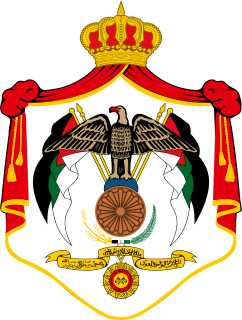The Constitution of Jordan guarantees freedom of opinion and speech, in addition to freedom of the press and media, but all within the limits of the law. According to the U.S. Department of State, in practice there are significant restrictions in place curtailing the free operation of the media. Any criticism or defamation of the king or royal family is prohibited, as well as anything deemed to harm "the state’s reputation and dignity." The government has used tactics such as the threat of fines, prosecution, and detention to intimidate journalists and encourage self-censorship. Moreover, informants and censors at printing presses often give the government advance warning if a particularly inflammatory article is slated for publication, thereby allowing the government to apply pressure on the publisher to change or remove the item. However, King Abdullah recently issued a statement outlawing imprisonment of journalists,[ citation needed ] an act praised by human rights groups. Additionally, the Press and Publications Law and the Press Association Law impose certain limitations on the accreditation of journalists and the operation of newspapers; more damaging perhaps is the government’s unwillingness to advertise in newspapers not at least partially owned by the state. Jordanian radio and television are even more restricted in their freedoms than the press. Internet access in the kingdom is generally open and unrestricted, although there were past reports of government investigations into the sources of overly critical Internet sites. [1]

The Constitution of the Hashemite Kingdom of Jordan was adopted on 11 January 1952 and has been amended many times. It defines the hereditary monarchic rule with a parliamentary system of representation. It stipulates the separated powers of the state, the citizens’ rights and duties, financial affairs and other constitutional regulations.
Freedom of the press or freedom of the media is the principle that communication and expression through various media, including printed and electronic media, especially published materials, should be considered a right to be exercised freely. Such freedom implies the absence of interference from an overreaching state; its preservation may be sought through constitutional or other legal protections.
Mass media refers to a diverse array of media technologies that reach a large audience via mass communication. The technologies through which this communication takes place include a variety of outlets.
Despite these myriad restrictions, Jordan remains more open and tolerant of its domestic media than most of its neighbors. The judiciary, not the government, is the sole institution able to revoke licenses from domestic media organizations, and the government’s ability to shut down press outlets is severely limited. Additionally, court proceedings are open to the media unless the court itself rules otherwise. The law ensures the freedom and independence of foreign media organizations operating in Jordan, and international satellite television and regional television broadcasts are not restricted. [1]
The judiciary is the system of courts that interprets and applies the law in a country, state or an international community. The first legal systems of the world were set up to allow citizens to settle conflicts without violence.
Jordan had six AM, five FM, and one short-wave radio broadcast stations as of 1999, as well as a reported 20 television broadcast stations in 1995. A new radio and satellite station were scheduled to begin operations in June 2006 after two earlier delays. Jordanians had more than 1.6 million radio receivers in 1997 and 560,000 television receivers by 2000. Additionally, the country has six daily newspapers and 14 weeklies, as well as 270 other periodicals (with an average circulation of 148,000 in 1998). [1]

AM broadcasting is a radio broadcasting technology, which employs amplitude modulation (AM) transmissions. It was the first method developed for making audio radio transmissions, and is still used worldwide, primarily for medium wave transmissions, but also on the longwave and shortwave radio bands.

FM broadcasting is a method of radio broadcasting using frequency modulation (FM) technology. Invented in 1933 by American engineer Edwin Armstrong, wide-band FM is used worldwide to provide high-fidelity sound over broadcast radio. FM broadcasting is capable of better sound quality than AM broadcasting under normal listening conditions, so it is used for most music broadcasts. Theoretically wideband AM can offer equally good sound quality, provided the reception conditions are ideal. FM radio stations use the VHF frequencies. The term "FM band" describes the frequency band in a given country which is dedicated to FM broadcasting.

In the context of spaceflight, a satellite is an object that has been intentionally placed into orbit. These objects are called artificial satellites to distinguish them from natural satellites such as Earth's Moon.

